Cryptic Coptics
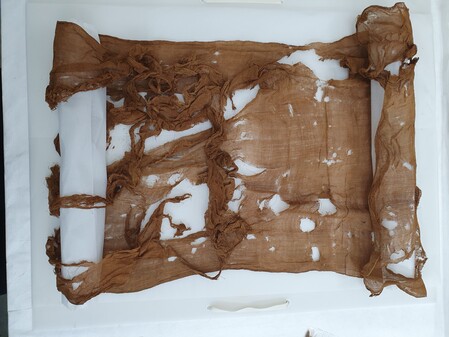
Beige, plain, and falling apart… Doesn’t sound like something a museum would be interested in, but Brighton & Hove Museums holds around 25 textiles almost entirely beige in colour, most with little decoration and many in very fragmentary condition.
These textiles, whilst quiet and modest to look at, are some of the most important objects within our collection.
They are known collectively as ‘Coptic’ textiles, hailing from Ancient Egypt where the conditions were dry and hot enough to prevent the breakdown of organic material we usually see in archaeological sites, allowing the textiles to remain incredibly well preserved despite being thousands of years old.
The world’s oldest known woven garment is a shirt excavated at an Ancient Egyptian necropolis or cemetery site called Tarkhan, and dates to the First Dynasty (c.3150 – c.2890 BCE), making it around 5,000 years old.
Known as the ‘Tarkhan dress’ (part of the UCL Petrie Museum of Egyptian Archaeology collections), it was discovered by Sir Flinders Petrie in 1913 during one of the many excavations in Egypt funded by the Egypt Exploration Society (EES), an organisation founded in 1882 to explore significant archaeological sites in Egypt.
Museums and individuals contributed to the Fund in exchange for a share of the finds, distributed amongst the donors according to the scale of their support. Objects taken from Egypt during these excavations by both Petrie and his understudy Francis Griffith form the basis of the incredible Egyptology collections at Brighton Museum.
Amongst these is another fragment of textile found at the Tarkhan necropolis, just south of Cairo, that dates to the First Dynasty, putting it in the same date range as the oldest textile ever found.
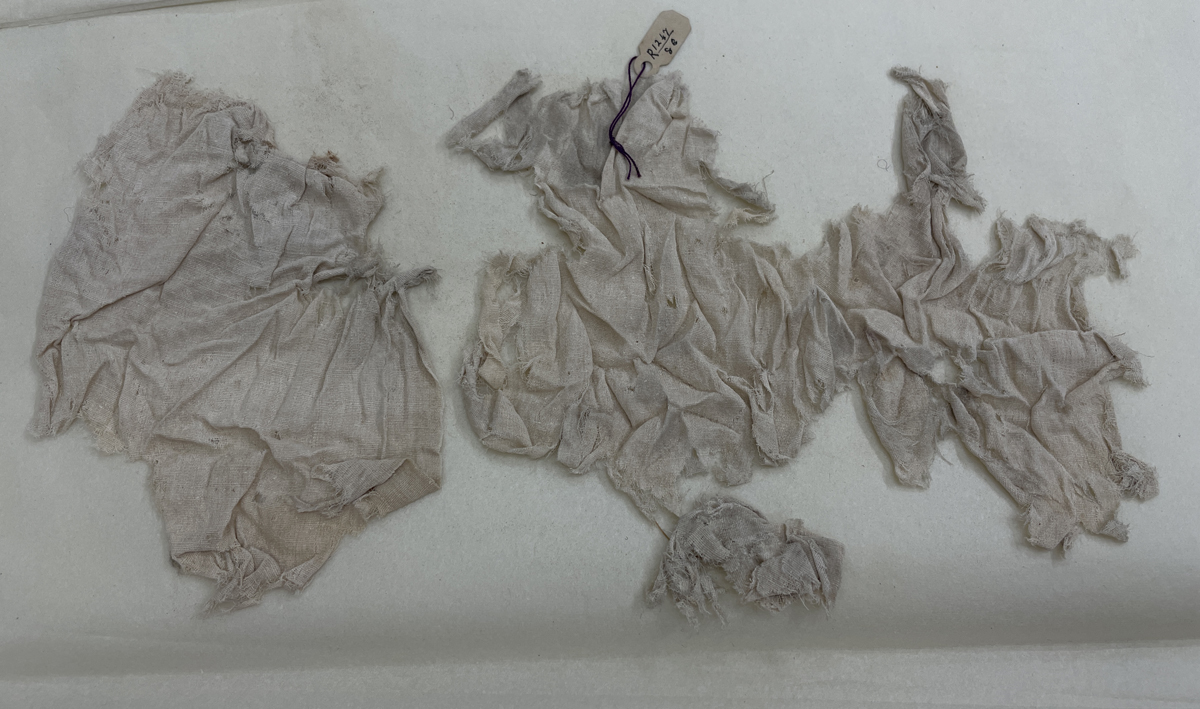
Curiously, this fragment of textile is very light in colour with black/blue staining, much lighter than any of the other Coptic textiles in our collection which have the natural beige hue of linen – the most common material used for textiles in Ancient Egypt and made from the flax plant.
Unfortunately, this is an indicator that the pieces may have been washed historically, perhaps shortly after excavation. In the late 1800s some archaeologists ‘cleaned’ excavated textiles in an effort to restore them to their original state, whilst in actuality removing some of the most interesting contextual and historical information they could provide and permanently changing the textile. It is believed that this fragment of textile sadly could have been subjected to this cleaning process.
Although the term ‘Coptic textiles’ now refer to textiles found in Ancient Egypt and the surrounding areas more generally, the term actually references a period in Egypt’s history when Egyptian religion and culture shifted to Christianity as a result of the Later Roman (284-641CE) and Byzantine (395-1453CE) occupation. Christian, secular and even Greco-Roman imagery and motifs are often seen in Coptic textiles as a result.
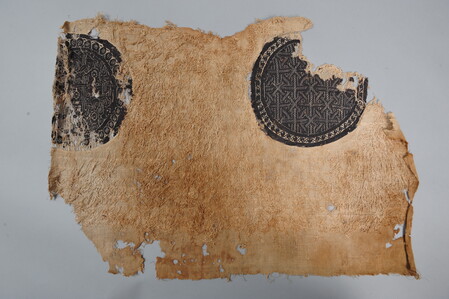
Another important site where many of the textiles in our collection were found is Hawara, a pyramid complex south of Cairo that was excavated by Petrie in 1888 and later in 1911. Amongst these are some of our most beautiful Coptic textiles, resplendent in different colours, patterns and embroidery. Most Coptic textiles were produced in plain or tabby weave using simple looms, but new techniques and designs developed over time, producing more complex and decorated pieces.
One such piece is a roughly rectangular piece of linen with a classic roundel Coptic decoration in dark wool which is tapestry woven. There is supplementary weaving throughout the textile creating a textured appearance called ‘loop pile’. These are formed by adding additional weft threads that extend from the surface of the fabric.
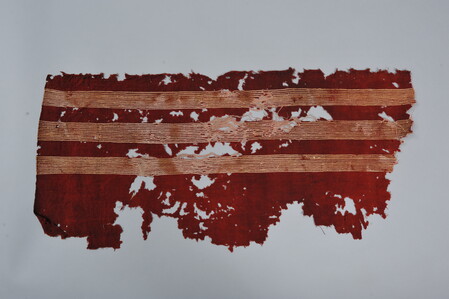
Dyed fabrics became more common in the Third and Fourth Dynasties (2687-2494BCE) with madder root used to produce reds, safflower to produce yellows, indigo for blues, and a mix of blue and yellow for greens.
A rectangular textile piece in our collection that has most likely been dyed using madder root is vibrant in its red colour to this day and has been decorated with strips of white thread.
Embroidery was used to embellish simple garments, to create beautiful patterns and textures, like we can see on this fragment of a child’s tunic that has been decorated with red and green wool embroidered along the sleeves, and black geometric patterns and cross motifs along the hem.

We have been working with conservator Tabby Gibbs from Zenzie Tinker Conservation to carefully repack, photograph and condition check all of our Coptic textiles, ensuring their safety and stability for long-term storage.
During this process we have had to unpick a number of intriguing documentation issues that are often seen with collections that entered the museum such a long time ago. It has been difficult to determine exactly which textiles were found at each site, as early descriptions were poor and images or drawings never taken.
Other enigmas have presented themselves over the years, such as tiny fragments that were not recorded on initial entry but have appeared, presumably as they have been lost from larger fragments over the years.
Excitingly, as a result of this project we were able to say with relative confidence (although we can never say for certain) that a tiny fragment of textile, only 30mm in diameter, bearing a cross motif in black wool on plain linen fragment is actually part of the child’s tunic. This fragment can now be stored alongside the tunic with detailed records to ensure it does not get lost again.
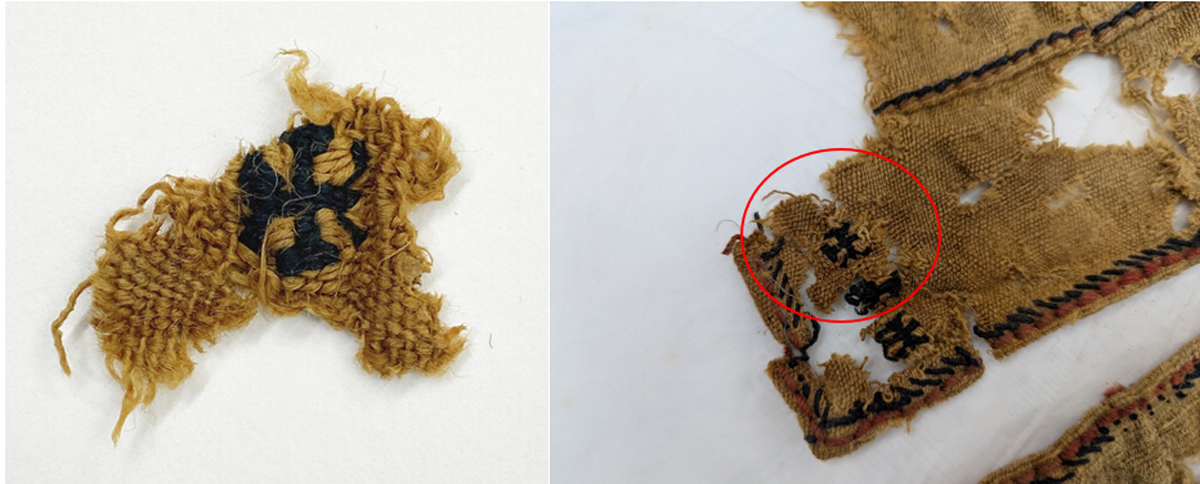
Our Coptic textiles have now been beautifully repacked and moved to a different store with better conditions to ensure better preservation of the textiles.
Undertaking these types of projects allows our curatorial staff to better understand and record these objects; taking photographs and improving descriptions enhances their documentation and allows better access for researchers.
Although at first glance these textiles could easily be overlooked, they are in fact some of the most exciting textiles in our collection and are internationally important in the field of archaeology.